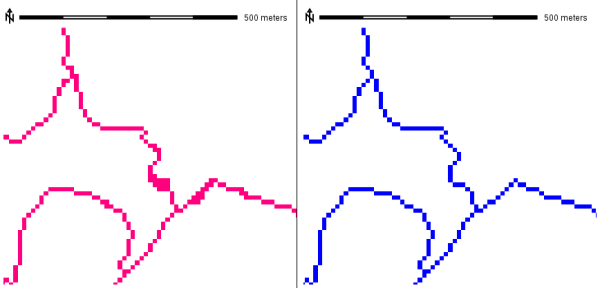Are there any tools or existing workflow which convert raster features (such as roads, rivers, electric lines etc.) which are (or can be) multiple cells wide to a single cell widht (i.e, center line).
For simplicity, lets say that we have binary data: 1 = feature (whatever it is) and 0 = NoData.
Like this: 
Now that's already pretty good, but how could I narrow all of those features to single cell width (using 8 node connectivity)? Looking a solution for some of the following softwares: ArcGIS, QGIS, SAGA GIS.


